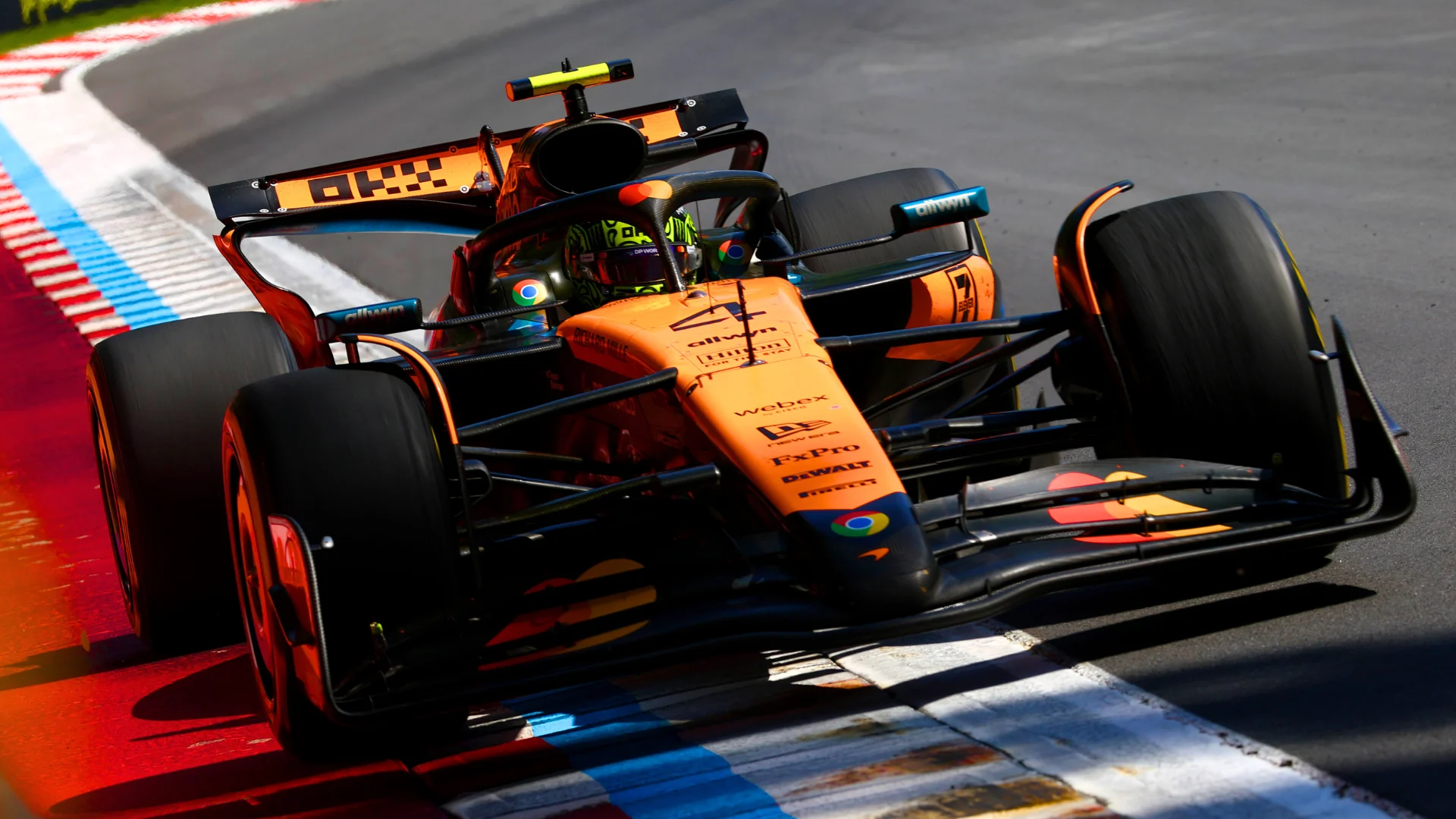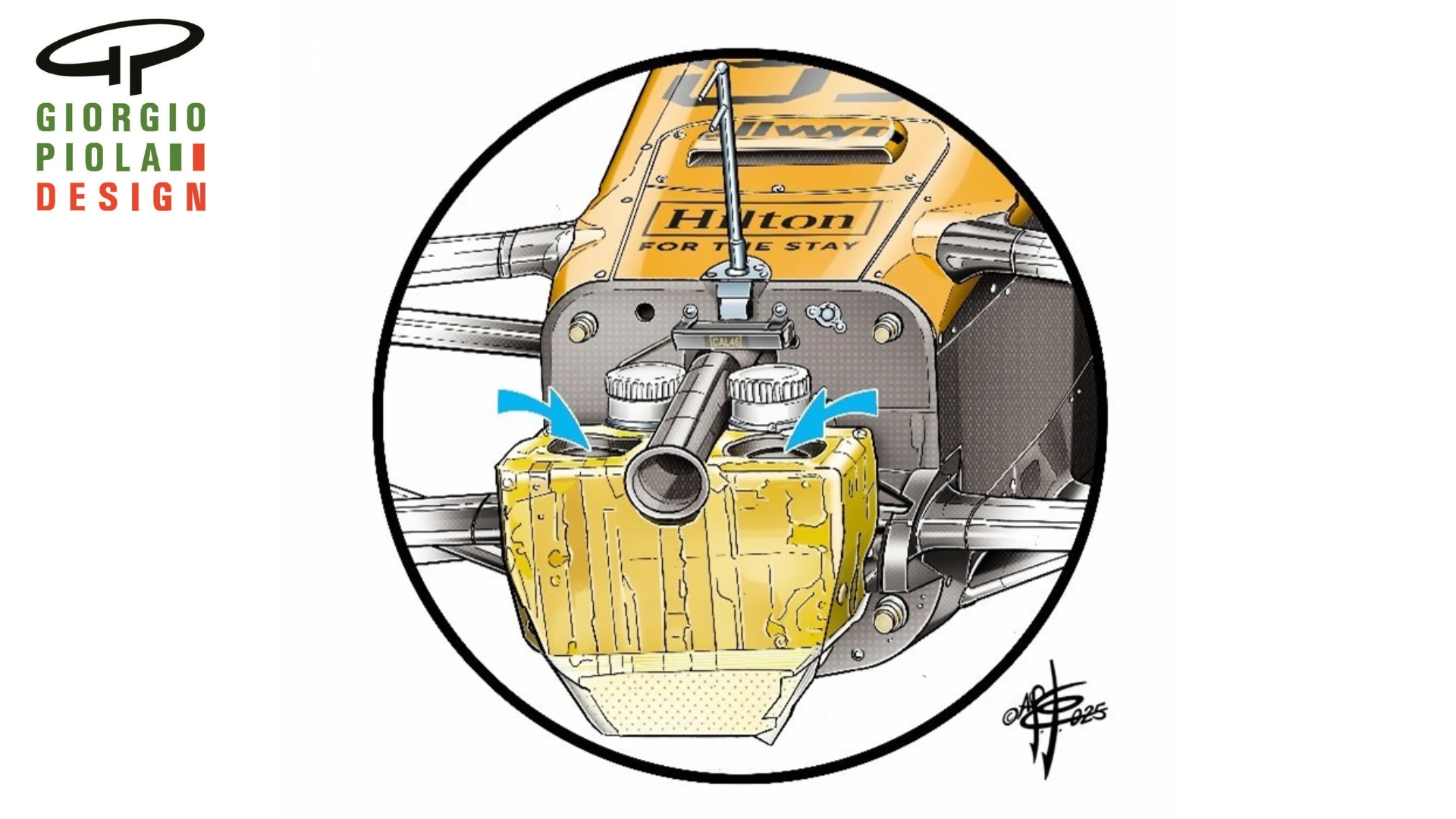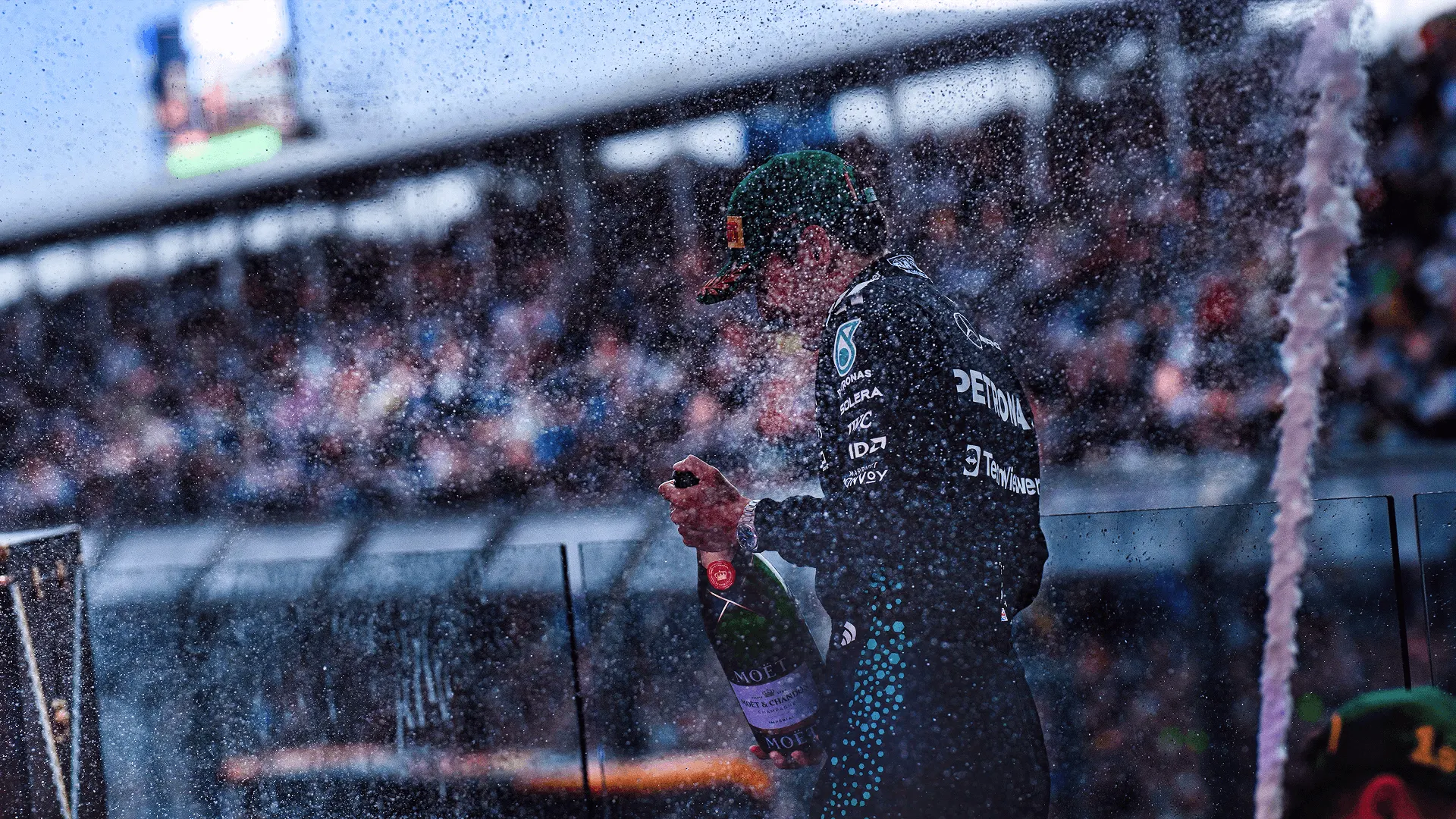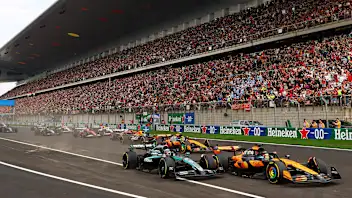TECH WEEKLY: The unique McLaren design feature that seems to have affected Norris more than Piastri
Lando Norris has mentioned how this year's McLaren does not give him the same level of confidence as last year's, and a key design feature could be the reason.


At a few of the hotter races so far this year McLaren has used a unique cockpit pre-cooling device.
It works when the chemical ingredients of dry ice are mixed in a container, placed in the car’s nose, and the resultant emissions of the cooling vapour are pumped through the car for several minutes as it sits on the grid. The container is then removed before the nose is re-assembled ready for the race.
Furthermore, the underside of the McLaren seat and the floor beneath are coated in heat-deflecting gold foil.
Why so much attention to the cockpit temperatures of the McLaren? Possibly because the way the team runs the car means that the front skid blocks wear more than those at the rear, which is unusual.
What it also means is that the great heat generated by those skid blocks crashing into the ground is directly beneath the driver. In its running configuration, the McLaren seems to create more cockpit heat than other cars.
A notable feature of the design of the car is the extreme anti-dive of the front suspension geometry, allowing the car a very flat aerodynamic platform. With less dive under braking, the front ride height can be significantly lower. This might help explain the more forward-biased plank wear seen on the McLaren.

A downside of such extreme anti-dive geometry is that it reduces feedback through the steering and brakes to the driver. Lando Norris has, on several occasions, mentioned how this car does not give him the same level of confidence and feedback on corner entry as last year’s car.
His driving style favours more combined braking and cornering than Oscar Piastri’s and the reduced level of feedback seems to have affected him more.
Consequently McLaren has developed an alternative, mildly tweaked, geometry for Norris – and this made its first appearance at Montreal. Visually, it’s virtually indistinguishable from the standard suspension but the upper rear wishbone’s mounting point to the wheel hub has been re-angled.
The brake duct bodywork hides the new arrangement and so whether it uses a reduced level of anti-dive to enhance steering feel is not currently known. It may also be that the steering’s king pin inclination – the angle to the wheel of the part around which the steering swivels and a standard way of enhancing the steering’s feedback – has been altered.
.webp)
If the anti-dive has been reduced on the new geometry, the downside of the improved steering feel would be that the car’s aero platform won’t be as flat and that its front ride height may need to be higher.
Norris stayed with the new suspension throughout the Canadian Grand Prix weekend. The new layout was available for Piastri but he opted to stick with the standard system.
“I could have run it if I wanted to, and I didn’t really,” he explained of the new layout.
“It changes some things — some things are better, some things are worse. It’s not as simple. It’s not an upgrade, it’s a different part.
"I’ve been happy with how the car’s been so far this year and, again, I just wanted to keep consistency.”

Next Up
Related Articles
 Power RankingsWho dazzled our judges at the finale in Abu Dhabi?
Power RankingsWho dazzled our judges at the finale in Abu Dhabi? Norris hopes title win doesn’t change him as a driver
Norris hopes title win doesn’t change him as a driver Hamilton 'doesn't have a mindset' for 2026 after tricky year
Hamilton 'doesn't have a mindset' for 2026 after tricky year Tickets on sale for 2026 Chinese Grand Prix
Tickets on sale for 2026 Chinese Grand Prix PalmerThe 6 defining moments of Norris’ title-winning season
PalmerThe 6 defining moments of Norris’ title-winning season.webp) VOTE: Choose your favourite race of the 2025 season
VOTE: Choose your favourite race of the 2025 season